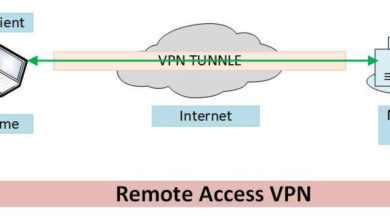
US and Europe Near Agreement on Private Data
Us and europe near agreement on private data – The US and Europe are on the brink of a historic agreement regarding the transfer of private data. This deal could have a profound impact on businesses, consumers, and the global digital landscape. After years of negotiations, fraught with legal challenges and political tensions, both sides are nearing a compromise that could finally pave the way for smoother data flows between these two economic powerhouses.
The agreement aims to address concerns raised by European regulators regarding the protection of personal data in the US. It seeks to strike a balance between the US’s need for access to data for economic growth and Europe’s commitment to safeguarding individual privacy.
The potential benefits are significant, including increased trade, innovation, and economic growth for both regions. However, challenges remain, including the need for robust enforcement mechanisms and ongoing dialogue to ensure that the agreement effectively safeguards privacy and data protection rights.
The Background of Data Transfer Negotiations

The transfer of personal data across borders has been a complex and contentious issue for decades, particularly between the United States and Europe. This tension stems from the differing approaches to data protection and privacy in these regions. While the US prioritizes free-flowing data for economic growth, Europe emphasizes individual privacy rights.
The Evolution of Data Transfer Frameworks
The history of data transfer negotiations between the US and Europe is marked by a series of agreements, each attempting to bridge the gap between these competing priorities.
- Safe Harbor (2000-2015): This framework was the first attempt to address data transfer concerns. It allowed US companies to self-certify their compliance with European privacy standards. However, the framework faced criticism for its lack of enforcement and its reliance on self-regulation.
- Privacy Shield (2016-2020): The Privacy Shield framework was designed to replace Safe Harbor, addressing some of the previous concerns. It included stricter requirements for data protection and introduced mechanisms for enforcement and redress. However, it also faced legal challenges and was ultimately invalidated by the European Court of Justice in 2020.
Challenges and Concerns
The current impasse in data transfer negotiations stems from several key challenges and concerns:
- Surveillance Practices: European concerns about US government surveillance practices, particularly the use of mass data collection programs, have been a major point of contention. The lack of robust legal protections for European citizens’ data in the US has been a significant obstacle.
- Enforcement and Redress: The effectiveness of enforcement mechanisms and the ability of individuals to seek redress for data breaches have been crucial points of discussion. European authorities have expressed concerns about the limited scope of enforcement and the difficulty of pursuing legal remedies in the US.
- Data Protection Standards: Differences in data protection standards between the US and Europe remain a point of contention. The US has a more sector-specific approach to data protection, while Europe follows a more comprehensive and general approach.
Key Issues in the Agreement
The US and Europe have long been engaged in a complex dance over data transfer, with the two sides often finding themselves at odds. This agreement, however, represents a significant attempt to bridge the gap and establish a framework for secure and lawful data flows across the Atlantic.
However, several key issues remain unresolved, highlighting the intricate challenges involved in navigating the delicate balance between privacy, security, and the free flow of data.
Privacy Concerns and the Role of Surveillance
The agreement faces significant scrutiny regarding the extent to which US surveillance practices might compromise the privacy of European citizens. European Union law, particularly the General Data Protection Regulation (GDPR), places stringent limits on the collection and processing of personal data.
The US and Europe are close to an agreement on how to handle private data, which is great news for the digital economy. But it raises some concerns about the delicate balance between security and privacy, a debate that often boils down to the question of whether we’re fighting a “war on terror” or a “war on liberties” ( war on terror or war on liberties ).
Hopefully, the agreement will find a way to protect our data without sacrificing our freedoms.
The agreement aims to address these concerns by outlining specific safeguards and limitations on US surveillance activities. The agreement acknowledges the importance of ensuring that any data transfer is subject to adequate legal protections, including robust safeguards against unauthorized access and use.
It emphasizes the need for transparency and accountability, requiring the US to provide clear and accessible information about its surveillance activities.
The Impact of the Schrems II Ruling
The landmark Schrems II ruling by the Court of Justice of the European Union (CJEU) in 2020 cast a long shadow over data transfer agreements between the US and Europe. The ruling invalidated the Privacy Shield framework, previously the primary mechanism for facilitating data transfers, due to concerns about the adequacy of US privacy protections.
The news about the US and Europe nearing an agreement on private data transfer is exciting, but it reminds me of a debate that’s been raging in my own life: Star Wars: Phantom Menace or New Hope ? Both are important milestones, but one feels like a necessary stepping stone, while the other is a defining moment.
Similarly, this data agreement could be a pivotal step towards a more interconnected digital world, or it could be a prelude to something even greater.
The Schrems II ruling underscored the importance of ensuring that data transferred to the US is subject to equivalent levels of protection as those enjoyed in the EU. The new agreement seeks to address the concerns raised by the Schrems II ruling by incorporating specific mechanisms to ensure that data transfers are subject to robust legal safeguards.
The Role of Security and Data Protection
The agreement also addresses the crucial issue of data security, recognizing the need to protect personal data from unauthorized access, use, or disclosure. It sets out a framework for ensuring that data transfers are conducted in a secure manner, with appropriate technical and organizational measures in place to mitigate the risks of data breaches.The agreement also emphasizes the importance of data protection principles, such as the principle of data minimization, which requires that only the necessary data is collected and processed.
It’s exciting to see the US and Europe nearing an agreement on private data protection, which could have significant implications for the digital economy. But even with these positive developments, we must also consider the broader social context, like the impact of debt and the effect on children , which can have lasting consequences on their future well-being.
Ultimately, a strong data protection framework should go hand-in-hand with efforts to address these underlying social issues, ensuring a more equitable and secure digital future for all.
It further underscores the importance of data retention policies, ensuring that data is only kept for as long as it is necessary.
The Need for Continued Collaboration, Us and europe near agreement on private data
The agreement represents a significant step towards addressing the long-standing challenges of data transfer between the US and Europe. However, it is crucial to acknowledge that this is an ongoing process, requiring continuous dialogue and collaboration between the two sides.
The agreement should be viewed as a living document, subject to review and adaptation as the digital landscape evolves.
Potential Benefits of the Agreement

A comprehensive data transfer agreement between the US and Europe holds significant potential for both economic and social benefits. This agreement would create a stable legal framework for the free flow of data across the Atlantic, paving the way for increased business opportunities, innovation, and economic growth.
Economic Benefits
The potential economic benefits of a data transfer agreement are substantial. By removing barriers to data transfer, the agreement would facilitate:
- Increased trade and investment:Businesses would be able to seamlessly share data across borders, leading to increased cross-border trade and investment. This would create new opportunities for companies to expand their operations and reach new markets, fostering economic growth in both regions.
- Enhanced competitiveness:The agreement would allow businesses to leverage data from both sides of the Atlantic, enhancing their ability to compete in the global marketplace. This would lead to increased innovation, productivity, and economic growth.
- Job creation:Increased business activity resulting from the agreement would lead to job creation in various sectors, boosting employment opportunities in both the US and Europe.
Impact on Businesses and Consumers
The agreement would have a significant impact on businesses and consumers in both regions.
- Businesses:Businesses would benefit from increased efficiency, reduced costs, and expanded market access. They would be able to leverage data more effectively to personalize products and services, optimize operations, and develop new business models.
- Consumers:Consumers would benefit from access to a wider range of products and services, lower prices, and enhanced privacy protections. The agreement would ensure that data is handled responsibly and securely, protecting consumers’ privacy and rights.
Implications for Innovation and Digital Trade
The agreement would have a significant impact on innovation and digital trade.
- Innovation:The free flow of data would foster innovation by allowing businesses to collaborate and share data more easily. This would lead to the development of new products, services, and technologies, driving economic growth and societal progress.
- Digital Trade:The agreement would create a more level playing field for digital trade, fostering competition and innovation in the digital economy. This would benefit businesses and consumers alike, leading to increased economic growth and prosperity.
Challenges and Concerns: Us And Europe Near Agreement On Private Data
While the proposed agreement between the US and Europe on private data transfer holds the promise of streamlining data flows and fostering innovation, it also raises a number of challenges and concerns. These concerns center around the potential impact on individual privacy and data protection rights, the effectiveness of oversight and enforcement mechanisms, and the broader implications for the global data landscape.
Potential Impact on Individual Privacy and Data Protection Rights
The agreement’s impact on individual privacy and data protection rights is a central concern. While the agreement aims to harmonize data protection standards, critics argue that it could lead to a weakening of existing EU data protection laws, particularly the General Data Protection Regulation (GDPR).
- The agreement’s reliance on adequacy determinations, which assess whether a country’s data protection laws are equivalent to those of the EU, could lead to a lowering of standards. This could occur if the US were to adopt a less stringent approach to data protection than the EU, potentially leading to a decrease in privacy safeguards for individuals in the EU whose data is transferred to the US.
- The agreement’s focus on data transfer mechanisms, such as standard contractual clauses, might not adequately address the broader context of data protection, including the use of data by companies and government agencies. Critics argue that the agreement should encompass a more comprehensive approach to data protection, addressing issues such as surveillance and data retention.
Role of Oversight and Enforcement Mechanisms
The effectiveness of oversight and enforcement mechanisms is crucial for ensuring the agreement’s success in protecting individual data. A key challenge is ensuring that both the US and EU have robust mechanisms in place to enforce the agreement’s provisions.
- The agreement relies on the US’s Privacy Shield framework, which has been criticized for its lack of independence and accountability. The US Department of Commerce, which oversees the Privacy Shield, has been accused of not adequately enforcing its provisions, leading to concerns about the framework’s effectiveness.
- The agreement also lacks a clear mechanism for dispute resolution, which could make it difficult to resolve disagreements between the US and EU regarding data protection. This could lead to legal challenges and uncertainty for businesses and individuals.
Implications for the Global Data Landscape
The agreement’s impact on the global data landscape is another area of concern. While the agreement aims to create a more predictable and secure environment for data flows between the US and EU, it could also lead to a fragmentation of data protection rules worldwide.
- The agreement’s focus on bilateral arrangements could undermine the efforts of international organizations, such as the Organisation for Economic Co-operation and Development (OECD), to develop global data protection standards. This could lead to a patchwork of data protection rules, making it difficult for businesses to operate across borders.
- The agreement’s impact on data protection standards in other countries could be significant. For example, countries that rely on US data protection laws may be forced to adopt similar standards, potentially leading to a decrease in data protection safeguards globally.
The Future of Data Transfer
The agreement between the US and Europe on private data transfer is a significant step towards harmonizing data protection standards and facilitating cross-border data flows. This agreement is expected to have a profound impact on the future of data transfer, influencing how data is shared and protected globally.
Impact on Future Negotiations
The US-EU agreement sets a precedent for future data transfer negotiations. It demonstrates the potential for cooperation and compromise between different jurisdictions in establishing data protection frameworks. This agreement could serve as a model for similar agreements between other countries, leading to a more interconnected global data economy.
Impact on International Data Flows
The agreement aims to streamline data transfers between the US and Europe, reducing regulatory hurdles and fostering greater cross-border data flows. This could lead to increased economic activity, innovation, and collaboration between businesses and organizations in both regions. For example, European companies could more easily access and process US data, while US companies could more readily operate in the European market.
Evolving Landscape of Data Protection and Privacy
The agreement reflects the growing global focus on data protection and privacy. It demonstrates the increasing importance of data protection in the digital age, and the need for international cooperation to ensure a consistent and robust approach to data privacy.






